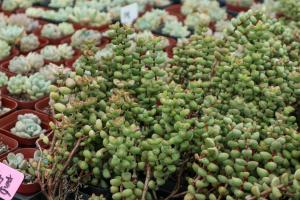How to Care for Raspberry Plants in Pots
Raspberry plants are popular among gardeners due to their sweet berries and healthy nutritional content. They are easy to grow in pots, and taking good care of them ensures a healthy and fruitful harvest. Here are some tips on how to care for raspberry plants in pots.
Choose the Right Pot
The first step in growing raspberry plants in pots is to choose the right container. Choose a pot that is at least 18 inches deep and 24 inches wide to allow enough space for the roots to grow. Make sure the pot has good drainage holes at the bottom to prevent waterlogging. Use a lightweight soil mix that retains moisture and nutrients for the plant to thrive.
Provide Adequate Water
Raspberry plants need regular watering to keep the soil moist. During the growing season, water the plants at least once a week, depending on the weather conditions. Avoid overwatering, as it can cause waterlogging and rotting of the roots. To ensure proper drainage, elevate the pot above the ground using bricks or blocks.
Give Nutritious Fertilizers
Raspberry plants require plenty of nutrients to produce healthy leaves and fruits. Use organic fertilizers such as compost, bone meal, and fish emulsion to enrich the soil. Feed the plants twice a year, in early spring and late fall, to provide a steady supply of nutrients. Avoid using chemical fertilizers, as they can harm the plant and contaminate the soil.
Control Pests and Diseases
Raspberry plants are susceptible to various pests and diseases, such as aphids, spider mites, and fungus. To control pests, use natural remedies like neem oil, soap spray, or diatomaceous earth. To prevent diseases, maintain good air circulation around the plant, avoid overcrowding, and remove infected leaves and fruits promptly. Regularly inspect the plant for signs of damage and take appropriate measures on time.
Prune and Train the Plant
Pruning and training the raspberry plant helps it grow well and produce more fruits. During the dormant season, prune the canes that have produced fruits and leave the new canes for next year's harvest. Train the remaining canes to grow vertically using stakes or trellises, and tie them loosely with twine. Pinch off the tip of the new canes when they reach the desired height to promote bushier growth.
Conclusion
Growing raspberry plants in pots is a rewarding experience that requires proper care and attention. By choosing the right pot, providing adequate water and nutrients, controlling pests and diseases, and pruning and training the plant, you can enjoy a bountiful harvest of sweet raspberries every year.

 how many times do yo...
how many times do yo... how many planted tre...
how many planted tre... how many pine trees ...
how many pine trees ... how many pecan trees...
how many pecan trees... how many plants comp...
how many plants comp... how many plants can ...
how many plants can ... how many plants and ...
how many plants and ... how many pepper plan...
how many pepper plan...
































